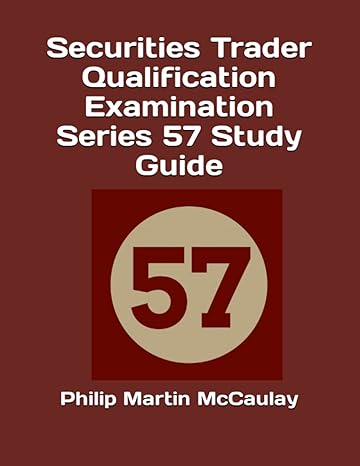Question
The Executive Director is formulating an Operating Budget recommendation for the next year. She has made a series of assumptions based on previous year performance
The Executive Director is formulating an Operating Budget recommendation for the next year. She has made a series of assumptions based on previous year performance and expectations about the coming year. She is particularly concerned about increased energy costs and a likely recession that may hold down contributions and foundation support. The CWC wants to budget for a 6% (of total expense) surplus to provide protection against unforeseen events.
Your role is to prepare the budget for the following (next) year based on the assumptions adopted by the Executive Director and the budget for the current year. You will also be asked to analyze the results of those budget assumptions.
Assumptions for NEXT budget year:
Revenue: Special events will increase by 20% due to a new event. Contributions will increase by 10% due to new membership drives. Grants will fall by 20% due to the end of a current grant. Interest income will be unchanged from the current year, but endowment income will be up 10% due to large endowment contributions in the current and previous years.
Expenses: Special events will increase by 20% due to an additional event and there will be a 10% increase in fundraising, newsletter, and postage expenses. The staff members have already been notified that they should not expect a raise. All other expenses, with the exception of payroll tax, which is proportional to salary, will increase by 3%.
Current Year Budget
Revenue: Timing:
Special Events $40,000. 1st qtr. 20%, 2nd quarter 60% and 4th quarter 20%
Contributions $40,000. 1st qtr. 20%, 2nd qtr. 20%, 3rd qtr. 20%, 4th qtr. 40%
Grants $40,000. 2nd quarter 40%, 4th quarter 60%
Endowment Income $5,000. Earnings on Endowment Fund: 25% each quarter
Interest Income $2,000 Interest on operating fund: (1% of previous qtr. ending bal.)
Total Revenue $127,000.
Expenses:
Travel $3,000. 1st quarter 10%, 2nd quarter 30%, 3rd quarter 50%, 4th quarter 10%
Special Events $40,000. 1st quarter 20%, 2nd quarter 60%, 4th quarter 20%
Conferences $3,000. 3rd quarter
Fundraising $5,000. 1st quarter 20%, 2nd quarter 30%, 4th quarter 50%
Insurance $3,000. 1st quarter
Newsletter $2,000. 25% each quarter
Postage $2,000. 25% each quarter
Professional Fees $5,000. 25% each quarter
Publicity $1,000. 25% each quarter
Salary $45,000. 25% each quarter
Supplies $2,000. 25% each quarter
Payroll Taxes $4,500. 10% of Salary each quarter
Telephone $1,500. 25% each quarter
Total Expense $117,000.
Part A: Prepare a line-item Operating Budget for the following (next) year using the Current Year numbers and assumptions about changes in individual line items. Youll find that this, and subsequent questions, can be answered more easily if you prepare your work in a spreadsheet.
(6 points)
1) Calculate the CWCs surplus or deficit for the current year both as a dollar amount and
as a percent of annual (Total) expense (Surplus or Deficit / Total Expense). (1 point)
2) Without much information about the organization, which ONE expense seems
unusually high / low during the current year? (1 point)
3) Use the assumptions concerning changes in the various revenue and expense line items to
calculate the CWCs surplus or deficit for the next year both as a dollar amount and as a
percent of annual expense. (1 point)
4) Does the budget for the next year meet their goal of a 6% (percent of annual expense)
budget surplus? If not, calculate the surplus they need to exactly hit the 6% (of total expense)
budget surplus target assuming total expense is constant. (1 point)
Part B: Prepare a quarterly cash budget for the next year. Assume all revenue and expenses occur on the last day of each quarter. Also assume a $50,000 beginning cash balance. Add 1% each quarter based on the beginning of quarter cash balance (.01 x beginning of quarter cash balance) as interest income. Re-calculate the Interest Income line item for each quarter. (8 points)
1) How large (calculated both as a dollar amount and as a percent of annual expense) is the
lowest quarterly ending cash balance? (1 point)
2) Why did the Interest Income line item increase (decrease) from the budgeted amount? (1
point)
Step by Step Solution
There are 3 Steps involved in it
Step: 1

Get Instant Access to Expert-Tailored Solutions
See step-by-step solutions with expert insights and AI powered tools for academic success
Step: 2

Step: 3

Ace Your Homework with AI
Get the answers you need in no time with our AI-driven, step-by-step assistance
Get Started


